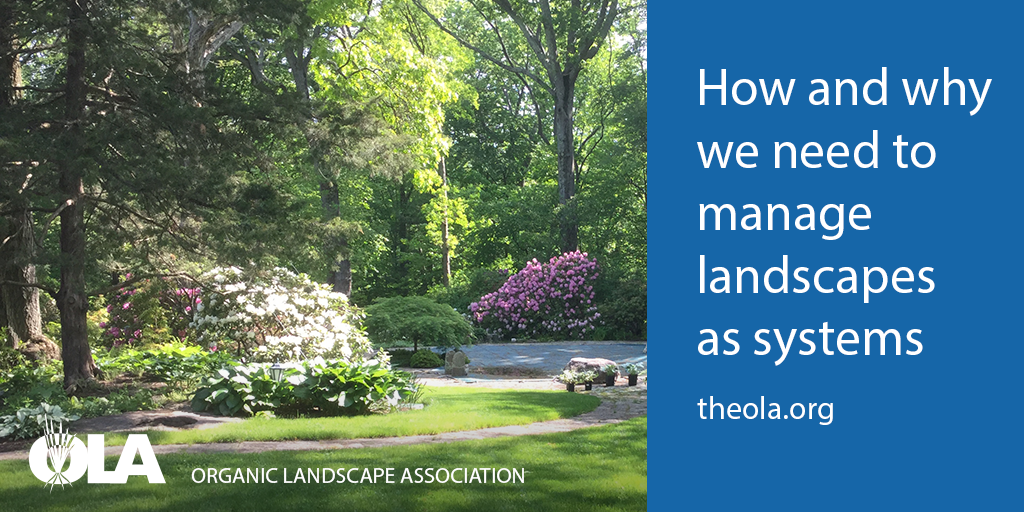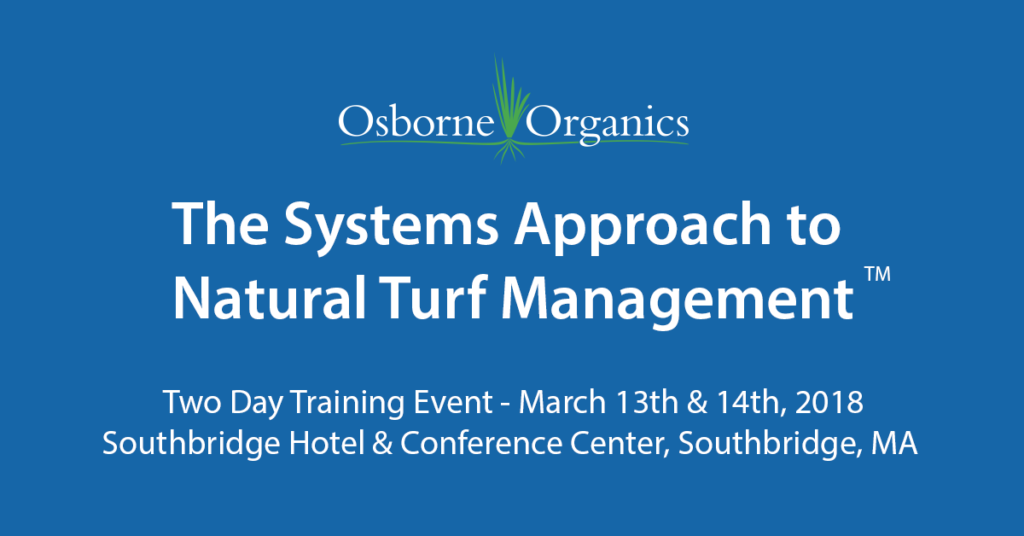How and why we need to manage landscapes as systems

Organic landscaping means following a systems approach to landscape management, which is designed to put a series of preventive steps in place that will solve problems.
This systems approach is based on three concepts:
1) Natural product where use is governed by soil testing and site considerations
2) Acknowledgment that the soil biomass plays a critical role in fertility
3) Specific and sound horticultural practices.
The Systems Approach is a “feed-the-soil” approach that centers on natural, organic fertilization, soil amendments, microbial inoculants, compost teas, microbial food sources, and topdressing as needed, or indicated, with high quality, finished compost. It is a program that supports the natural processes that nature has already put in motion. These inputs, along with very specific cultural practices that include proper planting, pruning, mowing, aeration, irrigation, over seeding, and “right plant/right place” are the basis of the program.
There is a lot that goes into a natural, organic program. It is much more than just a product substitution program. When we see situations where an “organic” program has been simply a product swap from conventional materials, those programs usually do not result in satisfying expectations.
Conventional management programs are generally centered on a synthetic product approach that uses highly water-soluble fertilizers and pesticide control products that continually treat symptoms on an annual basis. It is important to acknowledge that in addition to having adverse effects on human health and the environment, pesticides, by definition, kill, repel, or mitigate a pest. They do not grow plants. Our approach implements a strategy that proactively solves problems by creating a healthy soil and landscape system. Healthy, vigorously growing landscape plants and grass will outcompete most pest pressures, and a healthy soil biomass will assist the prevention of many insect and disease issues.
When a natural management program is being put in place after conventional management, a window of time, referred to as the transition period, is typically required to make practice and input changes. It is during this time frame when new products are put in place as we manage with the systems concept. Specific cultural practices are adopted. The most important element in beginning systems-based management is the attention to the soil, not just texture and chemistry, but the biomass as well. Success is achieved by focusing on the living portion of the soil from the beginning of a natural program. The length of time required for this process is directly related to the intensity of conventional management practices that are currently employed.
The goal of a natural, organic landscape management program is to create plants that meet aesthetic site objectives while eliminating toxic and synthetic chemical inputs. Additionally, the products and programs are designed to utilize materials and adopt cultural practices that will avoid problems associated with runoff or leaching of nutrients and pest control products into water bodies and groundwater.
This approach will build a soil environment rich in microbiology that produces strong, healthy plants that are more resilient and better able to withstand many of the stresses that can affect them. If good cultural practices are adopted, and products are chosen to enhance and continually address the soil biology, the natural system is better able to withstand pressures from insects, weeds, and disease, as well as drought and heat stress. While problems can arise in any landscape system, they will be easier to alleviate when the soil is healthy with the proper microbiology in place.
Get content from the OLA sent to your inbox, FREE
[ABTM id=558]
Join Chip Osborne in Southbridge, Massachusetts on March 13th & 14th to learn the Systems Approach to Natural Turf Management. Attendees have the opportunity to take the exam to become an Organic Lawn Care Accredited Professional (OLCAP).

